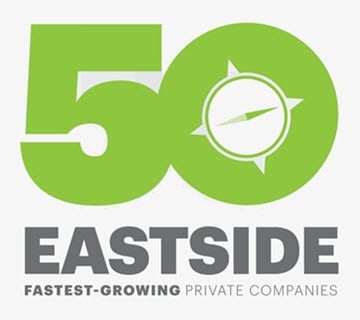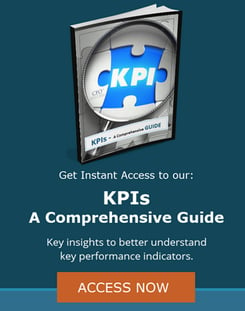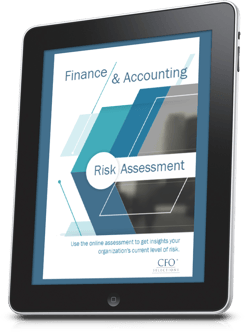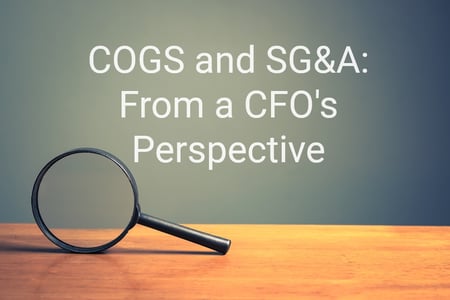 As fractional CFOs (Chief Financial Officers) we get a lot of questions about COGS (Cost of Goods Sold) and SG&A expenses from our clients. They want to know how to classify different types of expenses, which one to focus on when trying to control costs, how to think about them when evaluating business opportunities, and what kind of impact each can have on profitability. As such, their questions often span the two interconnected worlds of accounting and finance.
As fractional CFOs (Chief Financial Officers) we get a lot of questions about COGS (Cost of Goods Sold) and SG&A expenses from our clients. They want to know how to classify different types of expenses, which one to focus on when trying to control costs, how to think about them when evaluating business opportunities, and what kind of impact each can have on profitability. As such, their questions often span the two interconnected worlds of accounting and finance.
From an accounting perspective, categorizing expenses correctly helps to ensure regulatory compliance and aids in ongoing cash flow management. While from a finance perspective, understanding their impact on revenue growth allows for effective long-term financial management. For these reasons, having a firm handle on the difference between SG&A and COGS is a critical component to running any business.
Operating Expenses and COGS Explained
Every organization that manufactures or produces something has two main types of costs that they incur to do business: Operating Expenses (known as “OPEX”) and, relevant to these kinds of businesses, Cost of Goods Sold.
OPEX are the costs involved in the company’s day-to-day operations, and typically make up the largest portion of its costs. These are the expenses that are not directly related to producing goods and include things like rent, utilities, payroll, property taxes, and insurance. The terms OPEX and Selling, General and Administrative (SG&A) expenses are generally used interchangeably, although some companies choose to separate out OPEX costs and SG&A expenses into distinct line items on the income statement to specifically highlight marketing/advertising, accounting, and legal costs.
Then, as the name would imply, COGS are the expenses that are directly related to producing goods/services like materials, direct labor, and distribution costs. These expenses are considered the “cost of doing business” for an organization and serve as an indicator of its gross profit.
Of course, knowing the difference between these types of expenses is only one part of the equation. What is equally (if not more) important is understanding the role each cost plays in an organization’s overall financial management strategy.
Financial Management Considerations
As CFOs, we are focused on more than preparing a well-organized income statement with properly categorized expenses. Of course, we always want to be looking at clean books and accurate financial statements, but we are mainly focused on the differences between SG&A and COGS as they relate to:
Analyzing Trends
Carefully reviewing SG&A and COGS numbers allows analysts and financial leaders to spot variability, identify seasonality, and recognize trends. These types of insights will often be found with the help of financial software that can utilize automation and AI functionality to help financial leadership gain detailed insights quickly so they can be turned into actionable plans.
Where occasional variability occurs or regular seasonality exists, financial plans can be put into place to mitigate the risk associated with those financial anomalies when they occur. While some SG&A expenses like legal costs will often not vary much over the course of a year, others may be heavily seasonal, like an increase in accounting costs around tax time or higher utilities costs during the cold winter months. However, COGS often will not have much seasonality to consider. When COGS change, they are more likely to do so either gradually over time or suddenly in response to a market change (like a supply chain disruption or change in import regulations). And while these types of changes tend to be unpredictable, financial leadership will work to spot changes right away so they can plan proactively to be better prepared when changes turn into trends.
The SG&A trends identified could be positive, like a one-time increase in marketing spending due to the launch of a new campaign leading to a large surge in sales, or negative, like a slow rise in salaries without a change in sales volume resulting in an ongoing decrease in revenue. COGS trends will be more straight-forward because an increase in something like materials or transportation costs will directly lead to a reduction in profitability. Therefore, analyzing SG&A trends and using those insights will be a more complicated endeavor than the process around looking at trends in COGS expenses.
Controlling Costs
Organizations that are talking about cost trends are almost always doing so as part of an ongoing effort to control costs. When budgets need to be tightened and cuts need to be made, CFOs will look not only broadly at SG&A and COGS but also at the individual expenses that make up these broader categories of expenses.
The general perception is that SG&A costs are typically more vulnerable to cost cutting measures than COGS because without COGS there are no products/services to sell. However, that does not mean that COGS are immune to being cut. Leaders that are looking to right the ship when it seems like it is sinking will often start with SG&A expenses and then move to COGS if they don’t see the results the results they’re looking for as quickly as they’d like. However, financial leaders need to tread that line of logic carefully because without sales or administrative payroll, which is classified as an SG&A expense, there won’t be anyone to sell anything to customers, so both are certainly important to protect in the right way when looking to cut costs.
Regardless of where the money is being pulled out of the budget, CFOs will need to make decisions that aim to reduce wasted materials, supplies, capacity, and efficiency without sacrificing the quality and deliverability of the product/service they are providing and the customer experience needed to attract, convert, and retain customers.
Evaluating Opportunities
When business opportunities arise CFOs will, in part, evaluate them through the lens of how they will affect SG&A and COGS.
Some opportunities will increase business costs, while others will decrease them, and these swings are often not shared uniformly across COGS and SG&A costs. For instance, a food service business expanding to a new location will incur both additional overhead costs (building rent, utilities, staff, website, tables and chairs, menus, etc.) as well as COGS (food transportation) but the SG&A expense increases will greatly outpace the increase in COGS. Part of a CFO’s job is to understand where cost efficiencies can be reached in either category. Using the same example, one factor that should go into the decision around selecting a new location for expansion is how to minimize food delivery costs given the company’s existing footprint of locations.
Conversely, some opportunities may involve a cost tradeoff. For instance, a company may discover an opportunity to move their manufacturing operations to a different location that has a lower cost of labor (an SG&A expense) but doing so will incur much higher shipping costs (COGS). Here, the financial leader’s decision will need include a careful analysis of what the magnitude of cost savings will be compared to the magnitude of cost increase and what the likelihood is of either of those changing (for better or worse) in the future is as well.
Forecasting
While it’s great for an organization to know what their current costs are, understanding where those expenses may be headed next is just as valuable (especially when evaluating business opportunities). CFOs will use SG&A expense and COGS data in revenue forecasting in their cash flow management and strategic business planning initiatives.
Practically speaking, forecasting SG&A expenses can help determine where additional staff should be hired or property acquired to achieve business goals, while forecasting COGS can help identify areas where third-party logistics can be used to reduce transportation costs across freight and shipping.
Benchmarking
Financial leadership requires a measuring stick to evaluate how well the company is performing, which is why CFOs will set both external and internal benchmarks. External benchmarks allow the organization to compare itself to the broader industry or to specific competitors. Internal benchmarks are rear-looking in nature, allowing the organization to compare its performance today to its performance at a specific point in time previously.
While benchmarking can be done with either SG&A or COGS, it is more often done with COGS because those costs are what are most standard among competitors. Comparing the cost of materials, production, direct labor, and shipping costs to other similar companies can give organizations a clear map for areas where they can improve their cost efficiency.
Strategic Revenue Growth
Ultimately, a CFO’s interest in SG&A expenses and COGS is to understand their impact on the organization’s profitability and revenue growth. Like any other metric or data set, CFOs lean on both expense categories to help form their ongoing plans, measure their success, and adapt for the future. A CFO will not simply look at siloed cost categories, but rather aim to understand how each drives today’s objectives and tomorrow’s success.
When you need outsourced CFO services, we can help! Our team has experience in all stages of business offering CFO consulting to help organizations improve their accounting practices and offer financial oversight. When you need the best outsourced accounting and finance leadership, contact us today!
